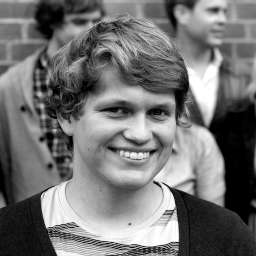It’s not every day that a world-class Baroque orchestra comes to small towns in the north of Norway. Then again, the Nordland Music Festival doesn’t happen every day. But maybe we should back up a bit. The Nordland Music Festival is a yearly festival held in the north-Norwegian town of Bodø. The festival includes a wide array of genres, but for the most part, it focuses on classical music and jazz. During the past few years, the festival has embarked on a slight specialisation of sorts, venturing into the Baroque. Recent festivals have included ensembles such as L’Arpeggiata and Europa Galante, and this year, the big Baroque headliner was the German period ensemble Akademie für alte Musik Berlin. Akamus, as they are often called, presented an all-Bach programme, featuring two cantatas (plus a sinfonia from yet another cantata) and a couple of concertos.
The first thing that struck me when the orchestra started playing was the impeccable balance and homogeneity of the sound. While at times I found the dynamic contrasts somewhat lacking (even though Bach hardly calls for loud, all-out fortissimos, just a little more oomph occasionally would have been appreciated), the orchestra sounded polished and well balanced, even in the softest sections. This sense of balance was noticeable throughout, but it especially came through in the first piece of the concert (the Sinfonia from Cantata no. 49, Ich geh’ und suche mit Verlangen), which also featured a rather brilliant bit of organ playing from Akamus’ organist and harpsichordist Benjamin Bayl.
But after their first number, the orchestra’s impeccable sense of balance started causing a good few problems. The next number, the first of the evening’s two cantatas – no. 199, Mein Herze schwimmt in Blut – was exquisitely played, especially the very prominent oboe part, but suffered a good deal because of it. The soprano, Johanette Zomer, was almost inaudible at times, especially during the first half of the cantata. While her straight-toned approach was beautiful, I struggled several times to hear her voice, especially in the arias with obbligato oboe. Nevertheless, she improved markedly during the cantata, and from the second aria onwards, seemed to make more and more of a connection with the text, even though I had some difficulty picking up the text during the last aria, a sprightly, rather wordy gigue.
The orchestra’s penchant for a balanced sound continued to cause problems in the next item on the programme, the Brandenburg Concerto no. 2, BWV 1047. The group of soloists, violin, recorder, oboe and trumpet, played well, but seemed consciously to avoid sticking out from the group. This meant that the sound wasn’t as dominated by the trumpet as it usually is in this particular piece, and highlighted the similar timbres of the oboe and trumpet, at times blending seamlessly together. But this balance and seeming reluctance to stick out also meant that the individual instrumental solos, most notably the virtuosic trumpet solo in the third movement, were lost in a polyphonic jumble. There was also an issue with the recorder being completely inaudible for large parts of the concerto, often only being heard when playing alone.
After intermission followed yet another concerto, the Harpsichord Concerto no. 5 in F minor, BWV 1056, deftly played by Benjamin Bayl. Next followed the last item on the scheduled programme, the secular wedding cantata Weichet nur betrübten Schatten. Again, the cantata needed a little time to get going, the first aria troubled by audibility problems and a certain disconnectedness from the text. Still, the remainder of the cantata featured some lovely music-making, especially the very virtuosic bass viol obbligato during the second aria.
It is always exciting when famous ensembles come to visit, to discover whether they live up to how you imagine their playing, how they compare to their own recordings, and so on. Saturday’s concert with the Akademie für alte Musik Berlin was definitely a mixed bag, focusing more on the balance and overall sound of the ensemble, and hence making it more about the orchestra itself than the soloists. But with a programme relying so heavily on soloists and their individual expression, I couldn’t help but feel a bit disappointed leaving the cathedral.


